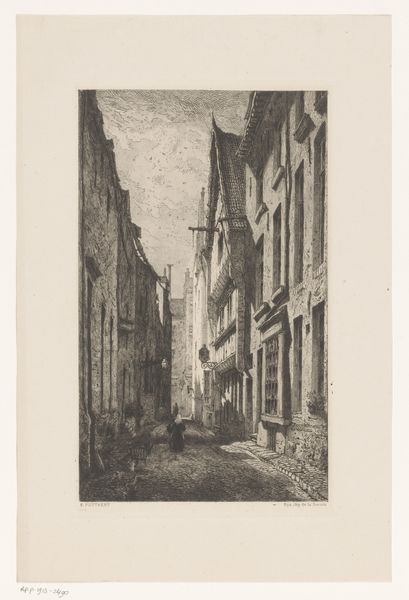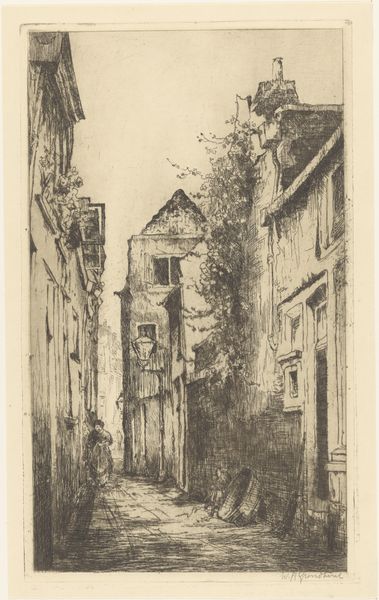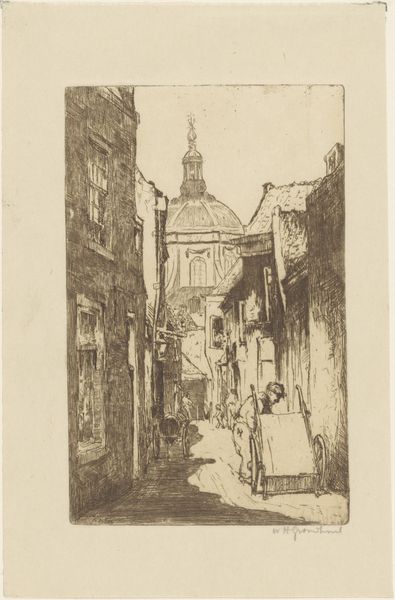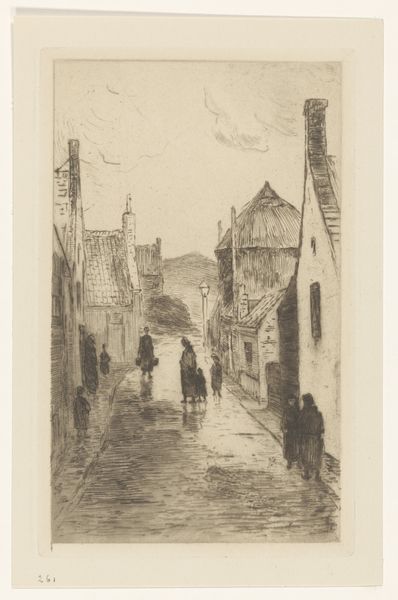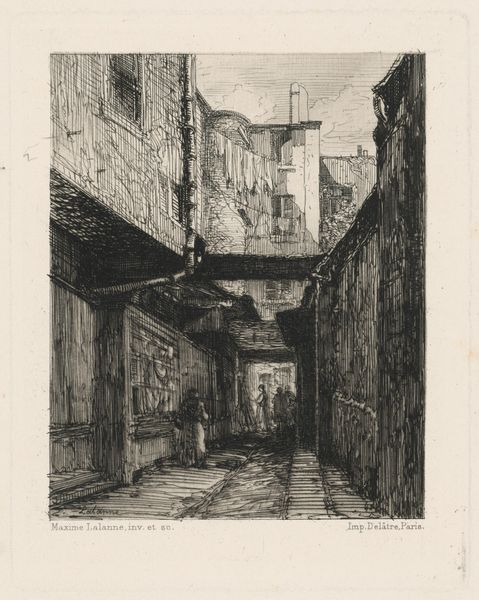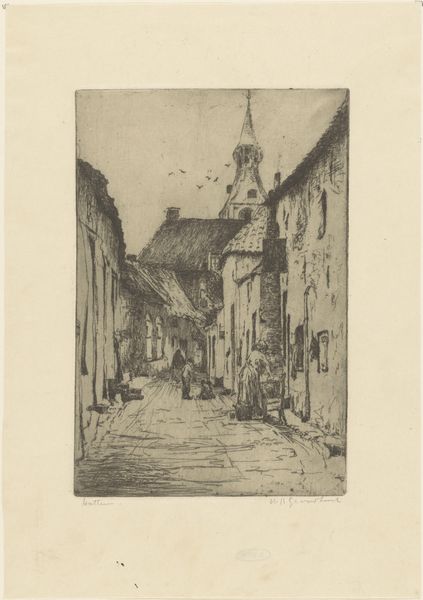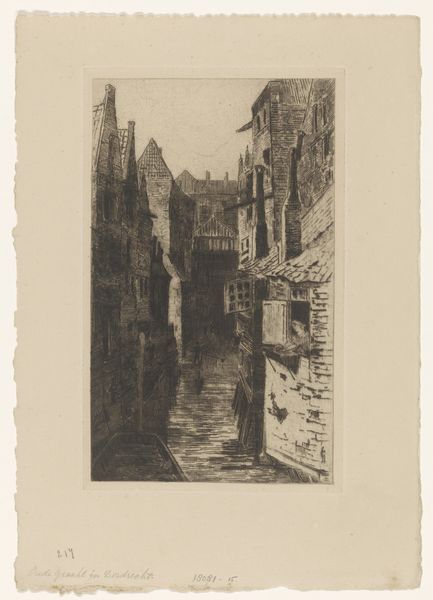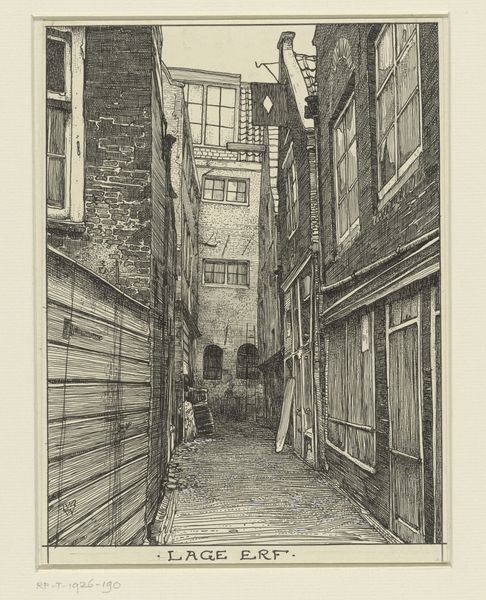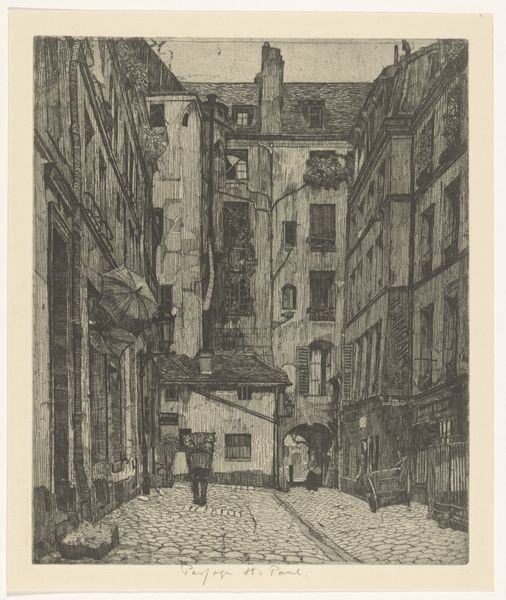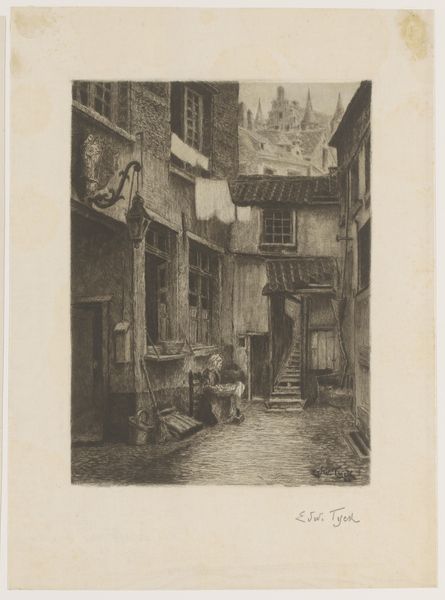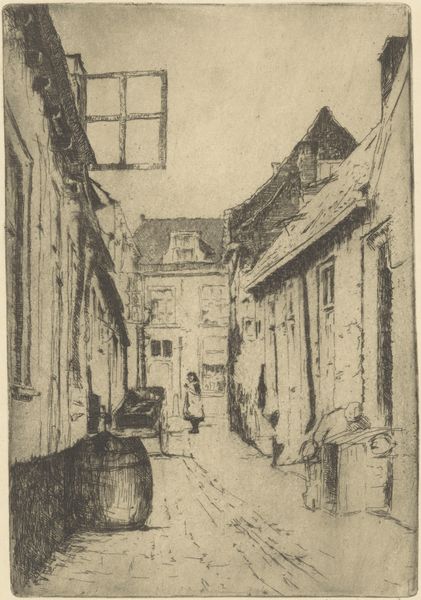
drawing, print, etching
#
drawing
# print
#
etching
#
landscape
#
etching
#
cityscape
#
realism
Dimensions: height 328 mm, width 195 mm
Copyright: Rijks Museum: Open Domain
Curator: It feels… quiet, almost melancholic, doesn't it? Editor: That's exactly what came to my mind. We're looking at "Steeg in Leiden," a cityscape etching made sometime between 1888 and 1934 by Willem Adrianus Grondhout, here at the Rijksmuseum. What's your take on the making? Curator: Oh, etching! You can almost feel the burin dancing across the metal. Look at the density of the lines, how they create such a compelling depth of field. And then, see how light barely touches some corners. Editor: Absolutely, and that density also speaks to the labor involved. Each line etched individually, the plate inked, pressed… there's a very hands-on quality to printmaking that's easy to overlook. Think about who had access to creating art at that time. Etching democratized the process a bit, didn't it? Curator: It did, yes. I see more than just a depiction of Leiden. The realism draws you in but invites an inward reflection. I wonder, what would it have been like to have seen this place when it was brand new? Before age had settled into the facades of buildings. Editor: Interesting thought. I also wonder what purpose a work like this served, for the artist and for the original viewer. Maybe this etching was purchased and displayed at home? Imagine how ordinary urban life might also signify pride for a collector or represent the circulation of visual information and social ties between people at that moment. Curator: That really is insightful! These are stories of people and society being translated into etched lines, capturing that ephemeral moment where the personal and the practical dance together, echoing into eternity! Editor: It does encourage me to view the art from different standpoints than simply admiring its aesthetics. Each little mark symbolizes a real job, each press tells a social story... Curator: Indeed! Perhaps these narrow streets aren't just passageways, but conduits for imagination, urging us to dream about lives both real and imagined.
Comments
No comments
Be the first to comment and join the conversation on the ultimate creative platform.
